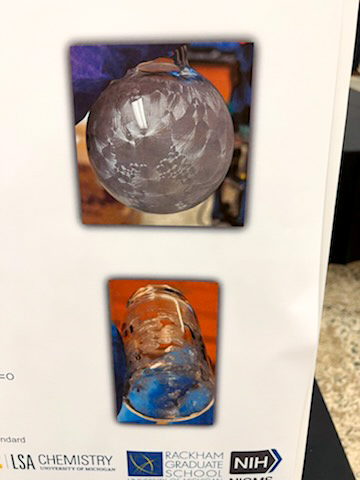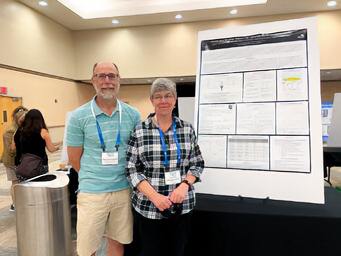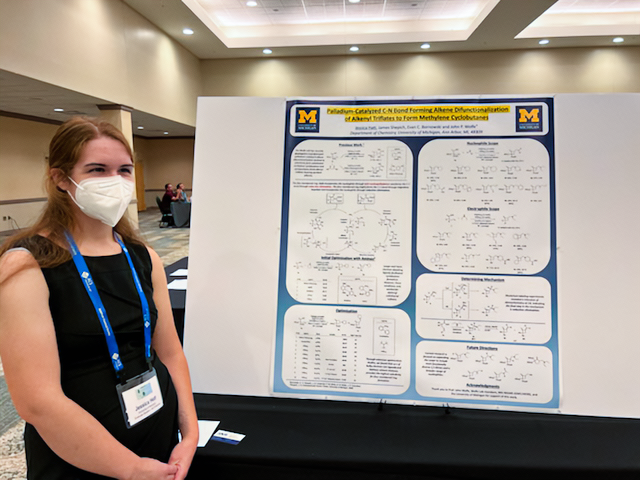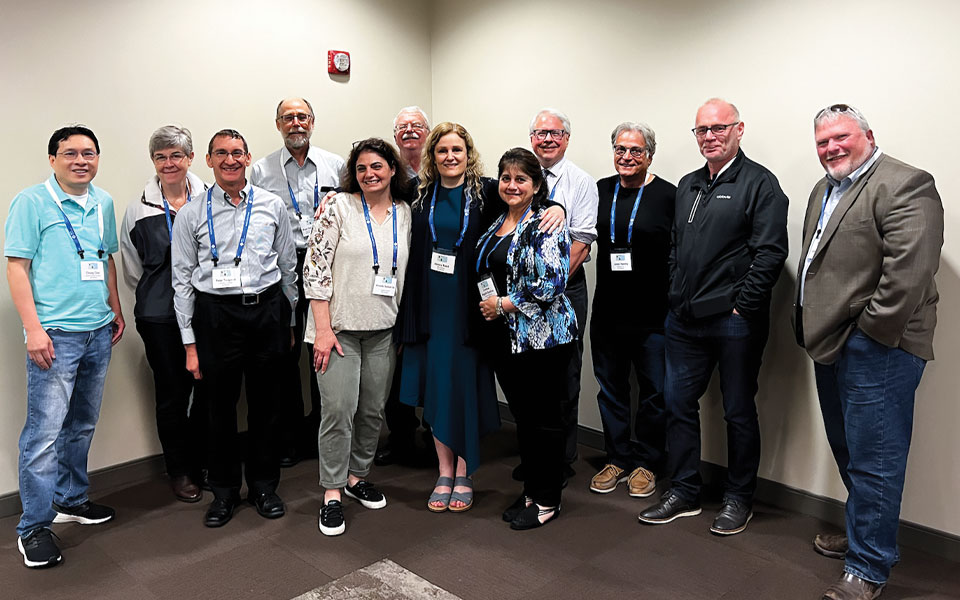I attended the American Chemical Society (ACS) Central Regional Meeting – CERM 2022 in person, hosted at Eastern Michigan University in Ypsilanti, Michigan, June 7-10th
Attendance was still adversely affected by understandable caution around COVID-19 and flight delays, but it was great to see students, academics and industry professionals get together to share data and research in person.
The Importance of Industry Networking
It reminded me of my first ACS National Meeting in Washington, DC, many years ago. I was excited to present my graduate research and meet my future postdoctoral employer. I enjoyed the talks on new research and industry discoveries and learned valuable insights about other areas of chemistry. It was career and life-changing for me.
This ACS regional meeting, although smaller than the full national meeting, was exceptional with new research, fascinating industry perspectives and well-prepared and presented data from people of many nations, U.S. states, chemistry disciplines and stages of their careers.
My background and personal interest in organic chemistry and pharmaceutical research led me to two main presentation sessions – the Warner-Lambert/Parke-Davis Legacy Symposium organized by Paul Dobrowolski and the Eastern Michigan University Alumni Symposium organized by W. R. Collins.

Some attendees from the Warner-Lambert/Parke-Davis Legacy Symposium Day 2.
Key Research Highlights
Excellent talks highlighted:
- Targeting the Janus kinase family to treat autoimmune diseases by J.J. Edmunds, which outlined the discovery and development of RINVOQ® (upadacitinib) at Abbvie.
- Innovations in Companion Animal Therapeutics by A.J. Gonzales: an excellent talk on Zoetis companion animal therapeutics and the highly successful treatment of itchy dogs.
- Discovery and Development of SPEAR a first-in-class novel biopesticide for crop protection. Will agriculture follow pharmaceutics in a shift to biologics? By B. Kennedy: detailing novel peptides for environmentally and bee-friendly pest control at Vesteron.
- Adventures beyond Ann Arbor in phenotypic drug discovery: Application of whole-animal behavioral assays in the discovery of novel psychiatric drug candidates by N.A. Powell – describing the fascinating discovery and development of novel antipsychotic agents at Sunovion.
- Discovery of chemistry to process chemistry Challenges, tools and solutions during this important transition by J. Graham at Cambrex – a highly entertaining discussion of the practical challenges associated with “just scale it up.”
- Building Integrated Automation Platforms for Data-Driven Chemical Discovery by I.M. Pendleton of Relay Therapeutics– discussing continued plans to automate the drug discovery process, AI in drug discovery and the benefits of innovation from open-source data. Learn more about the Open Reaction Database here.
- Implications of liquid chromatography column design & method development on biopharmaceutical analysis by J.P. Grinias, B. Libert, J. Godinho, S. Foster, B. Boyes – an excellent talk on improvements in liquid chromatography for characterization of large biological molecules from Rowan University. This also detailed advances in equipment miniaturization and green capillary chromatography.
- New adversaries in the Opioid Crisis: The Nitazenes by M.M. Vandeputte, K. Van Uytfanghe, N. Layle, D. St. Germaine, D.M. Iula, C. Stove – a fascinating and scary talk on opioids, the dangers of street drugs, overdose, fentanyl and nitazene analogs from Danielle St. Germaine at the forensic department at Cayman Chemicals.
- Finding, Validating and Developing Molecules that Target Drivers of the Immune System by D. Wustrow of RAPT Therapeutics described efforts leading to the identification of the CCR4 antagonists FLX475 for immune-oncology and RPT193 for allergic disorders.
- Drug Discovery in Pharma, Academia and Not-for-Profit Organizations by C.E. Augelli-Szafran of Southern Research described research at Harvard’s Brigham and Southern Research to identify targets and possible therapies for Alzheimer’s disease.
- Application of Chemical Biology Probes and Bioorthogonal Chemistry in Drug Discovery by D. Johnson of Biogen described creative uses of chemical probes in target identification and validation.
- When Opportunity Knocks: The KMN-159 Story by S.D. Barrett of Cayman Chemical described the discovery of KMN-159 a novel EP4 receptor-selective agonist.
- Tales of tau: Synaptic control using protease inhibitors by M.A. Walters of the Institute for Therapeutics Discovery and Development (ITDD) described the mechanism of action and discovery of small-molecule selective Casp2 inhibitors.
I also attended an insightful roundtable discussion: Skills beyond the Bench: Journeys in Leadership, sponsored by the ACS Women’s Chemists Committee, the National Organization for the Professional Advancement of Black Chemists and Chemical Engineers and the ACS Detroit Local Section where scientists shared their leadership experiences and insights.
There were many scientists presenting their research as posters which always provides a chance to ask questions and discuss research challenges. Below are a few of my favorites.

Poster: Catalytic intramolecular aminoarylation of unactivated alkenes with aryl sulfinamides. B. Wolesensky (pictured), E.A. Noten, C. Stephenson from the University of Michigan.

This poster had a very cool photo of the gorgeous crystals obtained.

Above and Beyond: Measuring Lipophilicity of Large Molecules. A. Chervenak*, D Katz*, K. Favre*, S Placko*, J. Longenberger*, L Philippe-Venec (pictured) from *Analiza Inc. and PIC analytics. This photo also includes Paul Dobrowolski from Cayman Chemical.

Poster: Pd(II)-Catalyzed gamma-Alkynylation of Allylamines. A. Mishra (pictured), V.G. Landge, and M. Young from the University of Toledo.

Poster: Palladium-catalyzed C-N bond-forming alkene difunctionalization of alkenyl triflates to form methylene cyclobutanes. J. Hatt (pictured), J. Shepich, E. Bornowski, and J.P. Wolfe from the University of Michigan.
There were many other excellent talks and posters presented by students, academics and industry professionals and the conference was extremely well organized and a pleasure to attend. There is nothing like an in-person conference to engage with fellow scientists and science.
Kudos to the meeting organizers and American Chemical Society.
By: Jessica Reed, Ph.D., Associate Director, Project Advisory Services
To learn more about working at MMS, visit our careers site.





